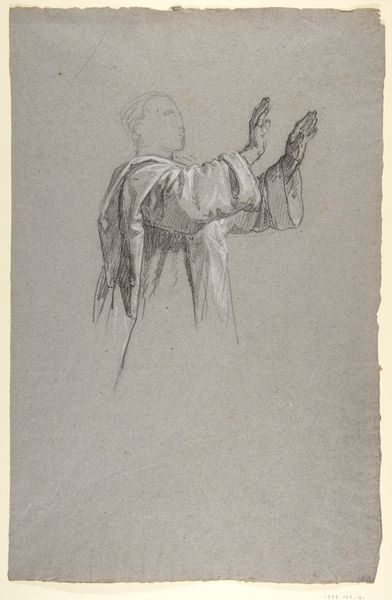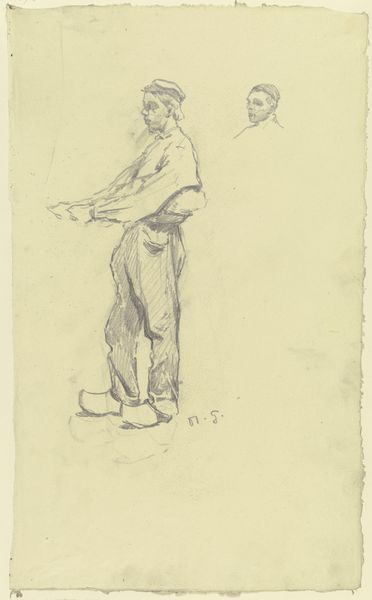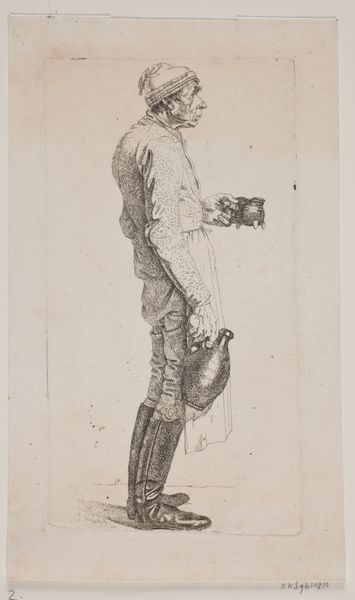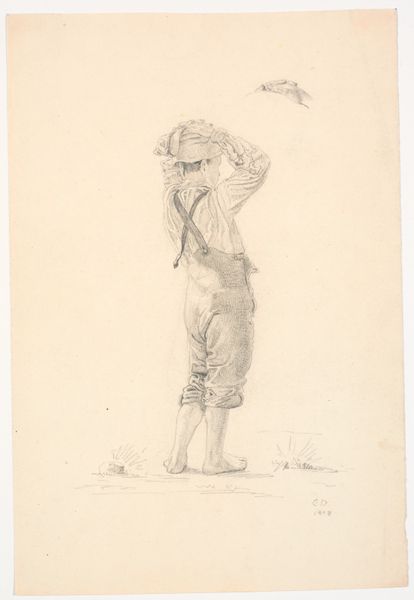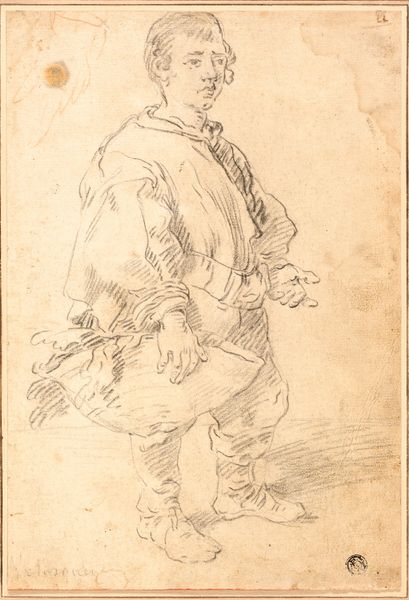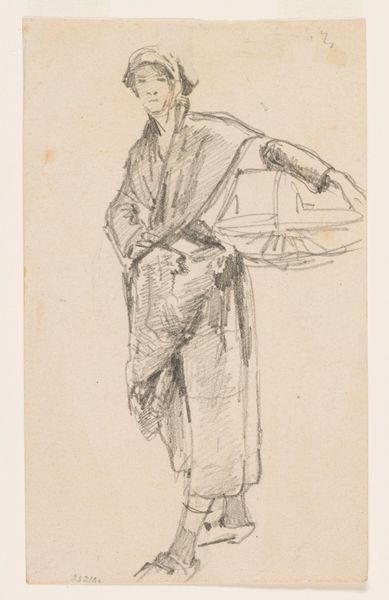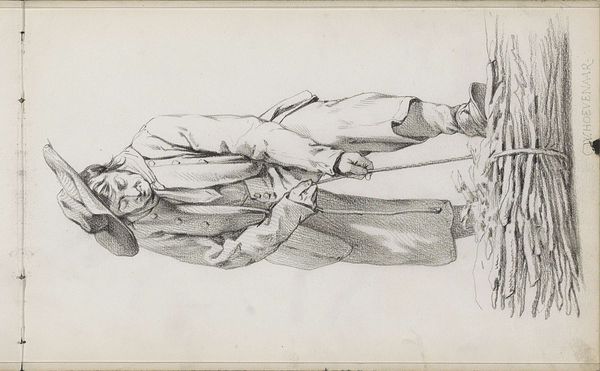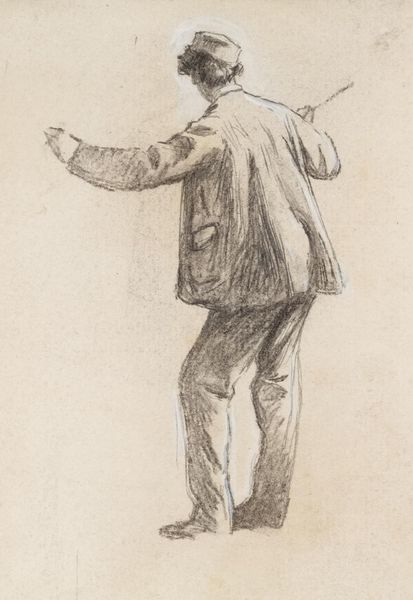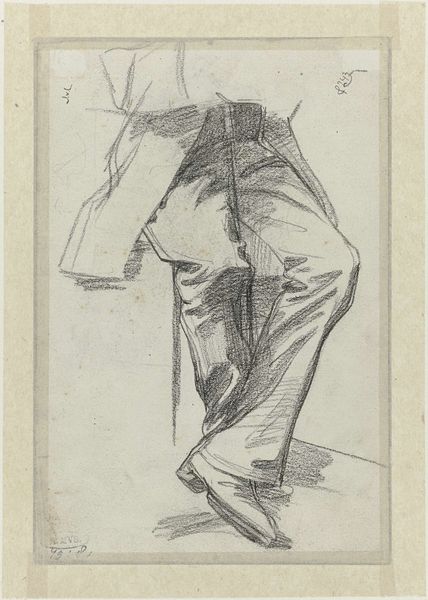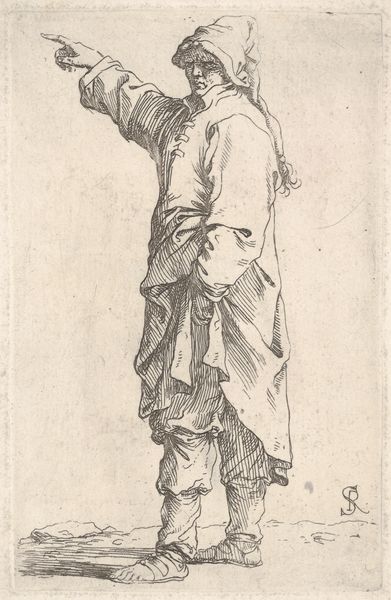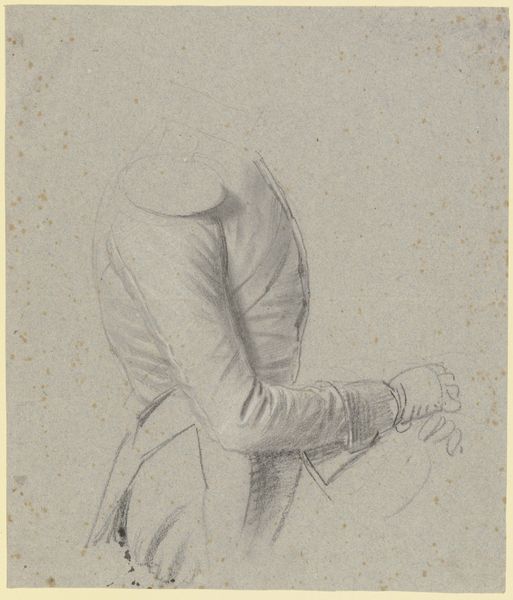
drawing, pencil
#
portrait
#
drawing
#
impressionism
#
pencil sketch
#
figuration
#
sketch
#
pencil
#
portrait drawing
#
realism
Copyright: Public domain
Curator: Edgar Degas’s "Amateur Jockey" from 1870, a pencil drawing on paper, presents us with a fascinating study of a figure in anticipation. What strikes you immediately about this work? Editor: The economy of line! It feels both intensely observed and incredibly fleeting, almost like a sketch captured in a matter of seconds. It evokes a feeling of transient tension and poised anticipation; you sense this man is on the cusp of significant action. Curator: Precisely! Degas's genius lies in his masterful manipulation of line and shadow to convey movement and psychological depth. Notice how the stark contrast between the crisp, dark strokes defining the lower body and the light, almost vaporous lines shaping the upper torso creates a dynamic tension. This very interplay between the figure and ground, that tension between form and formlessness, echoes the jockey's readiness. Editor: And it’s a very physical readiness. Degas highlights the angle of the body and stance as integral to the subject's endeavor. Think about the conditions that allowed this piece to come into existence – paper and pencil readily available alongside wealthy patrons. This wasn't mere observation, it was commenting on the industrial leisure of the era. Curator: Your emphasis on the material and economic conditions framing the piece are duly noted; but one should consider the semiotic power of such images that transcends time and location. It points to a symbolic engagement with class, leisure, and modern life. In that vein, examine the figure's clothing. How do his striped trousers and tailored jacket communicate social status and belonging? Editor: I agree that clothing speaks volumes about social standing. Yet, equally revealing is the very nature of the sketch—its apparent spontaneity reflects a certain social milieu where artists have both the time and the freedom to capture fleeting moments of everyday life. The accessibility of his method—paper, pencil, observation—belies the deeper, structured inequalities present. Curator: A compelling point! Ultimately, "Amateur Jockey" transcends its immediate subject, offering us a layered insight into the aesthetic possibilities of capturing a world in constant motion. The structural elements push beyond the simple constraints of material into wider areas of perception and class structures. Editor: Yes, both the immediate process of its making and its place within the context of a rapidly changing society – we have unearthed fascinating threads here today. I hope our listeners will spend some time contemplating both form and content of the work in equal measure.
Comments
No comments
Be the first to comment and join the conversation on the ultimate creative platform.
